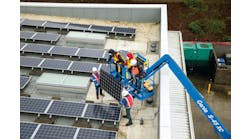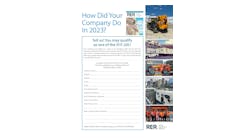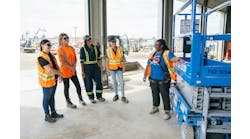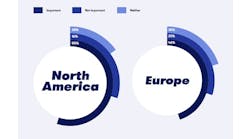Industry research firm IBISWorld recently released an industry market research report on the industrial equipment rental and leasing market in Canada. Though the recession stifled demand for equipment and caused rental prices to drop, the report forecasts that rental will become a more widespread tactic to combat volatile demand and make otherwise-fixed costs more flexible over the next five years, thereby increasing revenues.
The Industrial Equipment Rental and Leasing industry report includes data on a wide range of products, including industrial machinery, some construction equipment, entertainment products and medical devices. It provides key industry analysis and industry statistics, measures market size, analyzes current and future industry trends and show market share for the industry’s largest companies.
"The variety of products included in the industry offsets the impact of fluctuations in demand in any one market," said IBISWorld industry analyst Dale Schmidt.
Because the recession stifled demand for equipment and caused rental prices to drop, IBISWorld expects industry revenue to fall at an annualized rate of 0.6 percent to $3.0 billion in the five years leading up to 2013.
The industrial equipment rental and leasing industry's reliance on heavy industry and manufacturing, as well as its diverse product offerings, tie its performance to the health of the overall United States economy, IBISWorld said.
"When businesses grow or expand operations, the need for new office, retail and industrial spaces stimulates demand from contractors that rent equipment for such functions as carpet installation, woodworking, door manufacturing, carpet cleaning and other construction-related activities," added Schmidt. Manufacturers rent industrial machinery to increase capacity when demand calls for it. Other factors, such as consumer spending on entertainment, can influence the frequency of production studios renting audiovisual equipment. Also, state and federal government budgets drive demand for rental equipment in institutional buildings.
The recession caused three consecutive years of declining revenue in the industrial equipment rental and leasing market, consistent with the general slowdown in economic activity. But the industry began to rebound in 2011, and revenue posted ever-stronger growth in 2012. This growth will be driven by industrial activity across most sectors and by the stabilizing influence of the healthcare sector, which consistently demands medical devices for rent because current models become obsolete quickly, according to IBISWorld. However, growth is expected to slow to only 0.3 percent in 2013 as construction growth moderates from its recession rebound.
Overall, two of the industry's top companies, United Rentals and Hertz Global Holdings, account for an estimated 18.7 percent of industry revenue. As a result, the industry has a low level of concentration as the majority of industry establishments operate locally. Due to the moderate barriers to entry and high level of competition, very few new players entered the industry during the past five years; however, IBISWorld estimates the number of industry establishments will grow in the five years to 2018. As a result, concentration will remain low during the long term.
Moving forward, as rental becomes a more widespread tactic to combat volatile demand and make otherwise-fixed costs more flexible, IBISWorld forecasts industry revenue to rise during the five years to 2018. For more information or to purchase the Industrial Equipment Rental & Leasing in Canada Market Research Report, visit http://www.ibisworld.ca/industry/industrial-equipment-rental-leasing.html?partnerid=prweb.
Headquartered in Los Angeles, IBISWorld offers a comprehensive database of unique information and analysis on every U.S. and Canadian industry.





